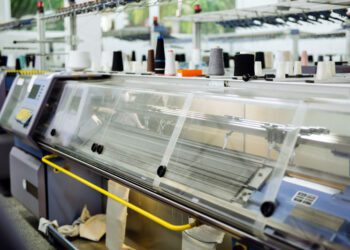In the race to stay relevant in the ever-evolving world of fashion, there’s a trend that’s not just fashionable but essential – sustainability. As the environmental impact of the apparel industry becomes increasingly evident, brands and producers are seeking green alternatives. “Sustainability in fashion is no longer a choice; it’s a necessity that blends both style and substance.” Delve into the eco-friendly innovations that are reshaping the apparel production landscape.
The Environmental Impact of Traditional Apparel Production
Traditional production methods in the apparel industry have often led to water pollution, excessive water consumption, and waste generation. Synthetic fibers, dyes, and finishes can be harmful to the environment and, in some cases, to human health.
Leading the Charge: Sustainable Raw Materials
Organic Cotton: Grown without harmful pesticides or synthetic fertilizers, organic cotton is a sustainable alternative to its conventional counterpart.
Bamboo and Hemp: These fast-growing plants require less water and pesticides, producing fibers that are both eco-friendly and durable.
Recycled Fibers: Brands are now recycling post-consumer waste, like plastic bottles, to create new garments, giving waste a second life.
Green Processing and Manufacturing
Waterless Dyeing: Using carbon dioxide or digital printing, this technique eliminates the need for vast amounts of water typically used in dyeing.
Biodegradable Dyes: Made from natural sources like plants and minerals, these dyes reduce harmful effluents released into water bodies.
Closed-Loop Systems: These processes recycle and reuse water and chemicals, significantly reducing waste and pollution.
Sustainable Fashion Business Models
Slow Fashion: This model emphasizes quality over quantity, producing fewer pieces that are timeless and long-lasting.
Fashion Rental: Renting clothes, especially for one-off occasions, reduces the demand for new clothing production and encourages sharing.
Upcycling: Transforming old or discarded garments into new, fashionable pieces gives clothing a renewed purpose.
The Consumer’s Role in Sustainable Fashion
While innovations drive sustainability, consumers play a pivotal role. Opting for eco-friendly brands, recycling or donating old clothes, and reducing the frequency of purchases can make a significant difference.
The Future is Green
The apparel industry’s eco-conscious shift is not just a trend but a revolution. As technology and creativity merge with a genuine concern for the planet, sustainable styles promise a fashionable yet green future.
In conclusion, sustainable innovations in apparel production showcase the industry’s commitment to a greener future, emphasizing that true style lies in sustainability.




















